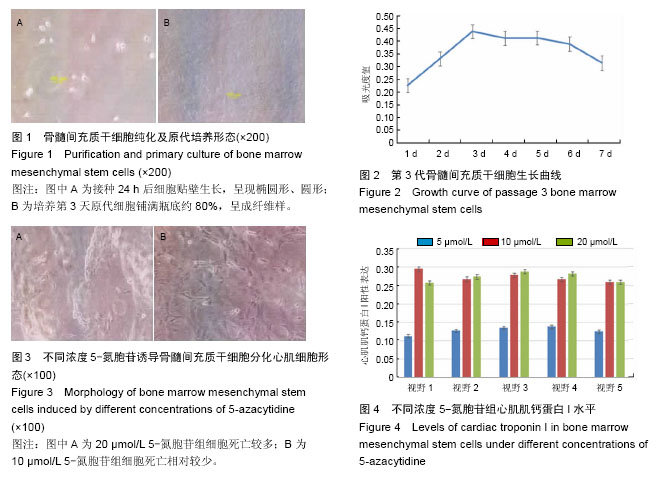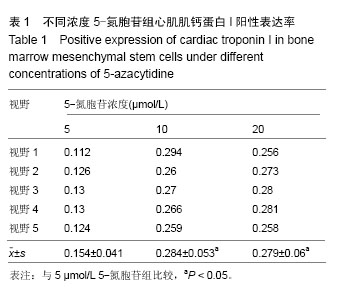| [1] Seo HW, Kim EJ, Na H, et al. Transcriptional activation of hypoxia-inducible factor-1alpha by HDAC4 and HDAC5 involves differential recruitment of p300 and FIH-1. FEBS Lett. 2009;583(1):55-60.[2] 刘城,吴平生,郭寿贵,等.腺病毒介导突变体HIF-1α基因对大鼠血管平滑肌细胞增殖的影响[J].广东医学,2007, 28(6): 871-873.[3] 郑景辉,李勇华,王丽萍,等.心血瘀阻证微环境对骨髓间充质干细胞向心肌样分化的影响[J].湖南中医药大学学报, 2010,30(9):38-42.[4] 李勇华,郑景辉,袁肇凯,等.养心通脉有效部位方对梗死心肌细胞因子分泌、血管新生及动员MSCs归巢的影响[J].中国中医基础医学杂志,2011,17(5):514-516.[5] 孙敬和,冼绍祥,黄习文,等.中医药干预骨髓间充质干细胞体外定向诱导分化为心肌细胞的研究进展[J].中药新药与临床药理,2012,23(1):115-118.[6] 袁肇凯,黄献平,李勇华,等.养心通脉有效部位方动员骨髓间充质干细胞归巢大鼠梗死心肌的实验研究[J].中华中医药杂志,2012,27(9):2321-2325.[7] Chan P, Liu IM, Li YX, et al. Antihypertension Induced by Tanshinone IIA Isolated from the Roots of Salvia miltiorrhiza. Evid Based Complement Alternat Med. 2011;2011:392627.[8] 柴丽娟,钟佩茹,周志焕,等.黄芪甲苷对体外神经干细胞增殖作用影响的研究[J].中国药理学通报,2010,26(5): 670-673.[9] 关凤英,李红,杨世杰.黄芪甲苷诱导NO生成并激活PKCε对大鼠心肌缺血再灌注损伤的保护作用[J].吉林大学学报:医学版,2010,36(2):340-344.[10] Zheng J, Wan Y, Chi J, et al. The active principle region of Buyang Huanwu decoction induced differentiation of bone marrow-derived mesenchymal stem cells into neural-like cells: Superior effects over original formula of Buyang Huanwu decoction. Neural Regen Res. 2012;7(4):261-267.[11] 郑景辉,李勇华,王丽萍,等.不同血清微环境对大鼠骨髓间充质干细胞体外培养的影响[J].中国组织工程研究与临床康复,2010,14(14):2497-2502.[12] 黄献平,袁肇凯,郑景辉,等.养心通脉有效部位方对MSCs向心肌样细胞分化的影响[J].中药新药与临床药理,2012, 23(4):427-430.[13] Fang JS, Dai C, Kurjiaka DT, et al. Connexin45 regulates endothelial-induced mesenchymal cell differentiation toward a mural cell phenotype. Arterioscler Thromb Vasc Biol. 2013;33(2):362- 368.[14] 杨军,丁赛良,邓彪,等.通心络对异丙肾上腺素诱导的H9c2心肌细胞肥大及Cx43mRNA表达的影响[J].中国实验方剂学杂志,2012,18(23):191-194.[15] 赵桂峰,范英昌,华声喻.丹酚酸B干预内皮祖细胞对骨髓间充质干细胞心脏移植后存活的影响[J].中华中医药杂志,2012,27(8):2172-2176.[16] 华声瑜,赵桂峰,李庆雯,等. 丹酚酸B预处理EPCs对AMI大鼠移植骨髓间充质干细胞后心肌微环境的影响[J].天津中医药,2012,29(2):117-120.[17] 王健,杨关林,陈岩,等.丹参联合骨髓间充质干细胞静脉移植对兔心肌梗死区血管再生影响的实验研究[J].中华中医药学刊,2010,28(4):792-795.[18] 武重阳,孙兰军,赵英强,等.复方丹参滴丸含药血清诱导大鼠骨髓间充质干细胞分化为心肌样细胞[J].中国老年学杂志,2010,30(16):2328-2330.[19] 毕肖林,杜秋,狄留庆.肠道转运蛋白和代谢酶在中药有效成分胃肠处置中的作用研究进展[J].中国中药杂志,2010, 35(3):397-400.[20] 夏广萍,刘鹏,赵娜夏,等.β-葡萄糖苷酶水解黄芪甲苷的研究[J].中草药,2012,43(6):1112-1114.[21] Argulian E. Obstructive sleep apnea is associated with increased high-sensitivity cardiac troponin T levels. Chest. 2013n;143(1):277-278.[22] 王海萍,张雷,赵静,等.大鼠骨髓间充质干细胞移植治疗心肌梗死的实验研究[J].中国临床解剖学杂志,2012,30(2): 209-213.[23] 杨军,丁赛良,邓彪,等.通心络对异丙肾上腺素诱导的H9c2心肌细胞肥大及Cx43mRNA表达的影响[J].中国实验方剂学杂志,2012,18(23):191-194.[24] 王海萍,张雷,王浩宇,等.催产素体外诱导大鼠骨髓间充质干细胞向心肌细胞分化[J].基础医学与临床,2011, 31(11):1273-1277.[25] 银广悦,张继领,陈素萍,等.人骨髓间充质干细胞体外诱导分化为心肌样细胞及鉴定[J].中华实用诊断与治疗杂志, 2012,26(8):750-752.[26] 侯婧,吕安林,刘博武,等.骨形态蛋白 2 诱导大鼠骨髓间充质干细胞分化为心肌样细胞的实验研究[J/CD].中华临床医师杂志: 电子版,2012,6(7): 27-30.[27] 文通,魏云峰,王梦洪,等.microRNA-1诱导大鼠骨髓间充质干细胞向心肌样细胞分化[J].基础医学与临床,2011, 31(1):41-46.[28] Tsutsui K, Bentley GE, Kriegsfeld LJ, et al. Discovery and evolutionary history of gonadotrophin-inhibitory hormone and kisspeptin: new key neuropeptides controlling reproduction. J Neuroendocrinol. 2010; 22(7): 716-727.[29] Tang J, Wang J, Guo L, et al. Mesenchymal stem cells modified with stromal cell-derived factor 1 alpha improve cardiac remodeling via paracrine activation of hepatocyte growth factor in a rat model of myocardial infarction. Mol Cells. 2010;29(1):9-19.[30] Gulotta LV, Kovacevic D, Packer JD, et al. Bone marrow-derived mesenchymal stem cells transduced with scleraxis improve rotator cuff healing in a rat model.Am J Sports Med. 2011;39(6):1282-1289.[31] Tobari Y, Iijima N, Tsunekawa K, et al. Identification, localisation and functional implication of 26RFa orthologue peptide in the brain of zebra finch (Taeniopygia guttata). J Neuroendocrinol. 2011; 23(9):791-803.[32] Chartrel N, Alonzeau J, Alexandre D, et al. The RFamide neuropeptide 26RFa and its role in the control of neuroendocrine functions. Front Neuroendocrinol. 2011;32(4):387-397.[33] Ukena K, Tachibana T, Iwakoshi-Ukena E, et al. Identification, localization, and function of a novel avian hypothalamic neuropeptide, 26RFa, and its cognate receptor, G protein-coupled receptor-103. Endocrinology. 2010;151(5):2255-2264.[34] 王琳琳,董为人,朱衍菲,等.脂肪源性干细胞向心肌细胞分化及其移植治疗心血管疾病[J].中国组织工程研究与临床康复,2011,15(14):2648-2652.[35] 孙敬和,冼绍祥,黄习文,等.黄芪甲苷联合5-氮胞苷诱导 MSCs 分化为心肌样细胞的实验研究[J].中药新药与临床药理,2012,23(4):431-434.[36] 武重阳,孙兰军,赵英强,等.复方丹参滴丸含药血清诱导大鼠骨髓间充质干细胞分化为心肌样细胞[J].中国老年学杂志,2010,30(16):2328-2330.[37] [37]刘韶英.吴红金.淫羊藿苷药理作用的研究进展[J].医学综述,2009,15(6):909-912.[38] 许宝满,蔡建平,张爱国,等.中药对骨髓间充质干细胞干预的研究进展[J].中国中医骨伤科杂志,2011,19(2):66-68.[39] Zhao L, Liu L, Wu Z, et al. Effects of micropitted/nanotubular titania topographies on bone mesenchymal stem cell osteogenic differentiation. Biomaterials. 2012;33(9):2629-2641.[40] 李晓峰,赵劲民,苏伟,等.大鼠骨髓间充质干细胞的培养与鉴定[J].中国组织工程研究与临床康复,2011,15(10): 1721-1725. |
.jpg)


.jpg)